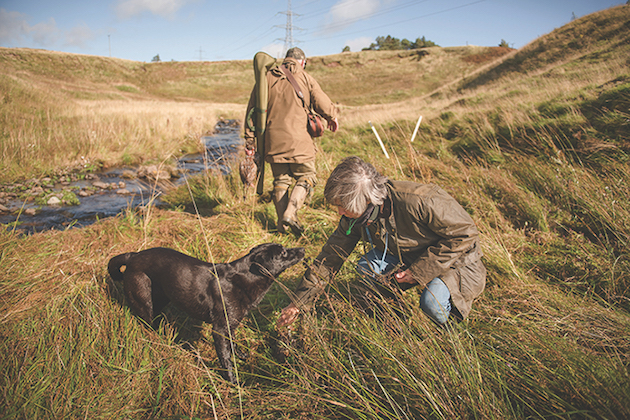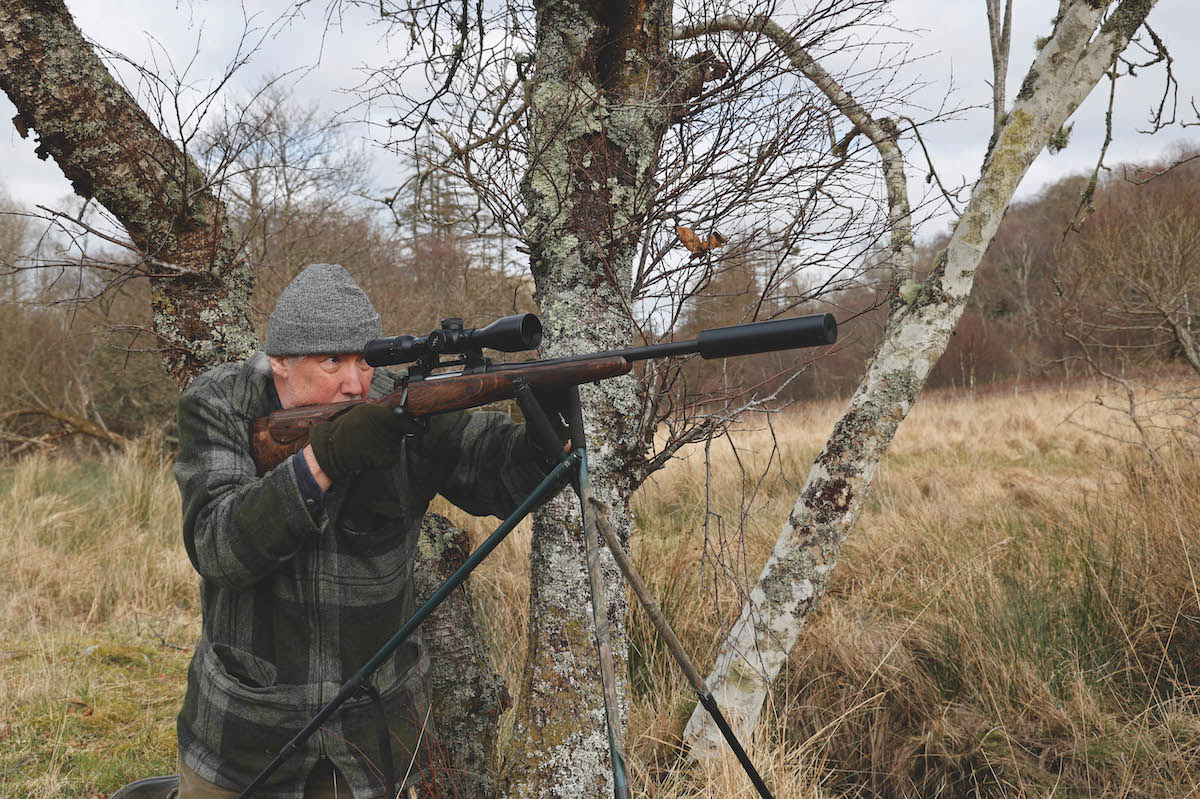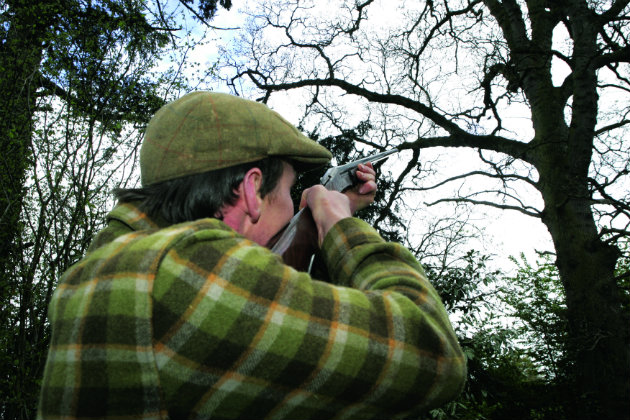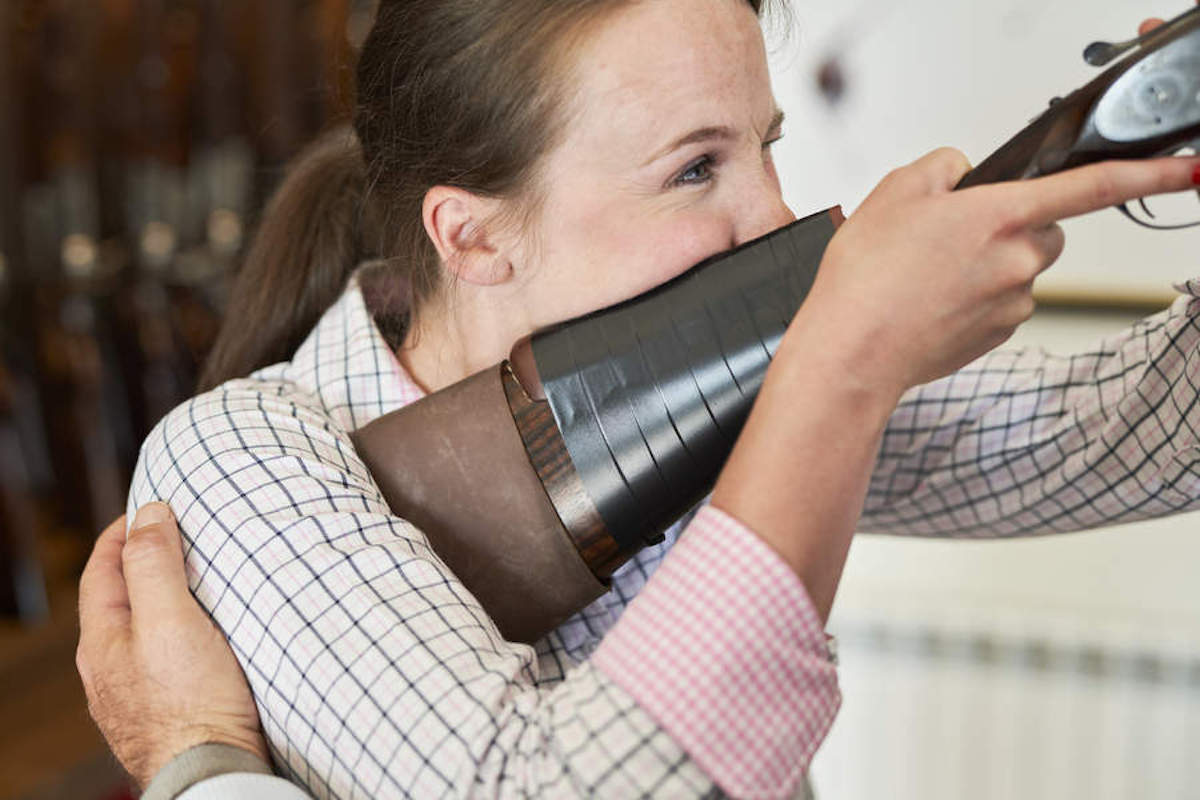Want to get involved on a shoot day next season? Here are some of the jobs you could do
Tony Bracci advises on different ways to help

Pickers-up position themselves to 'mark' all the shot game
Wondering how you can get involved in shooting? Thinking about becoming a beater or a picker-up next season?
The most common way to help out during the shooting season is to join a beating team. This can evolve into other jobs on a shoot day and to helping out of season, possibly in exchange for some pigeon shooting.

Whatever your role on a shoot, make sure you arrive in plenty of time
Beating on a shoot day
The role of beating on a shoot day can vary greatly depending on the shoot you join. Beating on a grouse moor, small local shoot or large commercial shoot will have different expectations of their beaters. Working as part of the beating line is a great experience and a lovely day out.
Make sure you turn up on time, so you can have a coffee and a chat beforehand. You will be expected to beat through cover throughout the day, so dress appropriately. If you know that you will be beating through cover crops, waterproof leggings as well as a waterproof coat will be necessary.
If you wish to bring a dog with you, check it is welcome, as some shoots are keen to use dogs in the line, others not so. A well-trained dog is always more welcome than one that runs off and flushes all the birds before the Guns have arrived.
As a beater you will need a stick to beat bushes and tap to push birds forward. You may also need a flag. Sticks and flags are likely to be provided, but people often bring their own. As a team you will be pushing areas of wood and cover towards a flushing point. When beating in a line, try to keep in line with the beaters to your left and right. Messages will be passed down the line, so ensure that you act upon them and, when necessary, pass them on. For someone new it may seem confusing, but holding the left and swinging the right round to meet up with another line will soon make sense.
As you gain experience and knowledge of a shoot, you may be asked to do different jobs. Stopping off is a job that involves stopping the birds moving out of the drive; this could be on the end or sides of the drive in progress, or on the next drive. This involves walking up and down tapping, keeping the birds in the cover.

Picking-up is one of the most essential jobs, making sure all injured game is despatched
Beaters also use flags as flankers to try to move the birds to fly in the right direction. You may be given a radio to report on various stages of a drive, such as when you have reached a certain point, or have met up with another line. Communication plays a vital role in ensuring a shoot day runs well. Some keepers can get very stressed, some are quite chilled, but remember they have worked all year to provide the sport on a few days in the season and have a great personal investment in how a shoot day goes.
New social horizons
Lisa Marie Davison, trade marketing manager of Micheldever Tyre Services says: “When I relocated to a rural community I found myself not knowing anyone and felt that I needed to get involved in an activity to meet new people and hopefully make some friends.
“It was through a conversation with a group of ladies who regularly beat for a local syndicate shoot that I asked them if I could join them and they welcomed me.”
“Through the contacts made from this shoot, I have since been asked to beat for other game shoots in the local area. I have found that shooting is a friendly and welcoming sport. Beating has given me something to look forward to each weekend and I am pleased that I got involved in shooting.
“I am grateful for the people that I have met through shooting and I would recommend beating to anyone looking to expand their social circle.”
Picking-up
Picking-up is another one of the important jobs on a shoot day. Making sure all shot game is picked, prioritising and retrieving injured quarry and despatching it as soon as possible. If you only have one dog, don’t expect a job on a big commercial shoot as there is simply too much work for it. Start on a small shoot and, if you are able to keep a number of good working dogs, build up to work on the bigger shoot days.
As a picker-up, you should position yourself to ‘mark’ all game that needs to be picked, which will normally be well behind the Gun line. You are likely to have a specific area to cover, which could encompass a couple of Guns.
Game picked should be left at strategic collection points for the game cart to pick up or taken directly to it. Some shoots have a sweeping team that picks-up a drive behind once the main pickers-up have finished, to check all the birds have been picked.
Be aware of any Guns who have brought their own dogs and want to work them; leave birds for them to pick and concentrate on injured birds and ones that have fallen well back. Communication with the Guns can help to ensure all shot quarry is accounted for. As a picker-up you may be expected to use your own vehicle to get around, which may need to be a 4×4 with off-road tyres.
Working on the game cart is usually a job for someone with a lot of experience of the shoot, working independently of the Guns, beaters and pickers-up. Moving around the shoot drives to collect birds and back to unload them into the chiller, then back to the next drive, needs good knowledge of a shoot. The game cart will also be keeping a detailed record of how many pheasants and partridges are shot on each drive.
When working on the game cart you may also be tasked with picking-up, and recording how many shots have been taken on each peg.
The shoot captain
A shoot captain’s job may look easy but, having done it for many years on a number of shoots, I can tell you that it isn’t the easiest of jobs on a shoot. The main task is communicating between the keeper and the Guns. It is necessary to have in-depth knowledge of a particular shoot and how everything works to make a day run smoothly. This involves managing a team of Guns in a number of vehicles, getting them to the right drive at the right time, and making sure you don’t block access for others working on the shoot. You will need to know not only where each drive is, but where each peg is located. You will need to remember each Gun’s peg number for each drive, as they usually forget.
Keep an eye on the Guns during the drive, making sure they are shooting safely and getting their fair share of shooting. Communicate with the keeper as to how the drive is going, allowing them to make adjustments on the flushing point to present the best possible birds. On some shoots the captain will be counting the shot count on a clicker and giving estimates on birds taken.
There are many jobs on a shoot day, some of which provide a small monetary recompense, but most do it for the fun, the company and the exercise. At the very least it is a great day out in the countryside and leads to the chance to shoot on beaters’ day, a reward for all your hard work.








